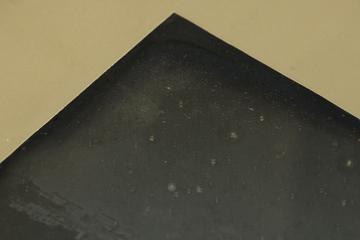


Naples, View from the second floor, South Window of Riveria di Chiaja No 57, looking East
1841-05-25
Florence, The Campanile and portion of the South side of the Cathedral
1841-07-03
Daguerreotype of Rome, Arch of Septimus Severus, 1841 by the Rev Alexander Ellis
1841
Rome, Palace of the Caesars from the steps leading to San Gregorio in Monte Felio
1841
Rome, Temple of Fuastina and Antonimus [from SE] now the Church of S Lorenzo in Miranda
1841-03
Rome, View from the Pavillion inthe Orti Farnesi on the Palace of the Caesars
1841-06-08
Rome, Remains of the Building generally called the Temple of Minerva Medica
1841-06-04
Rome, The Northern Portico, added by Agrippa to the Pantheon, with the obelisk
1841-06
Rome, Bronze Statue of Emperor Marcus Aurelius [South Side] on the Capitoline Hill
Rome, Piazza del Popolo from the Porto del Popolo
1840
Rome, Tunnel for letting out water of Lago Albano, and built by the Romans about 393BC during the seige of Veii
Rome, Piazza del Popolo from San Maria di Miracoli, in the centre the obelisk
Rome, Porta Maggiore exterior with the Baker's Tomb
1841-06-04
Rome, Facade of the Capitol
Rome. View from the Pincio. In the distance St Peter's with the Vatican Palace & Galleries
Rome, Trinita de' Monti & the Quirrinal from the Villa Medici on the Monte Pincio
Rome, View from the Salila del Campidaglio, to the left is Temple of Jupiter Tonans
1841-06-11
Rome, Fountain in the Pizza del Popolo at the foot of the Pincian Hil
Rome, Ponte Rotto from near the Temple of Vesta
Rome, Piazza di Monte Cavallo, from the Quirinal Palace
1841-06-05
Rome, Island of the Tiber
Rome, The Forum of Trajan, with broken columns. In the centre the column of Trajan
1840
Rome, Tomb of Caecilia Metella From the Campagna
Rome, Arch of Titus, interior of Basso Rilievo No 1, Titus in his Triumphal Car
Rome. Castle of San Angelo and the Bridge of San Angelo
1840
Rome.The Castle and Bridge ofSan Angelo from the Via del Banco di S Spirito
1841-06
Rome, Part of the wall of the Forum of Nerva, called Il Colonnaccio
1841-06-03
Rome, Colossal Statue in the Barberini Gardens
Rome, 2nd Basso Rilevo, interior of Arch of Constantine
Rome, Remaining column of the Temple of Nerva and Arch del Panteli
1841-06-03
Rome, Palazzo della Consulta on the Quirrinal residence of the Briefs and Secretary of the Consulta
Rome, Post Office
Rome, Palazzo Doria in the Corso
Rome, Palazzo di Venezia
Rome, Arch of Constantine, North side
Rome, Ist Basso Rilevo, interior of Arch of Constantine
Rome, The East side of the Triumphal Arch of Septimus Severus to the left of the Temple of Jupiter
1841-06-11
Rome, Arch of Septimus Severus, West side
Rome, Via di Ripetta from the street
Rome, View in the Forum from the Senator's Walk, West End, looking West
1841-02
Rome, Piazza Navona from the north east angle
1841-06-05
Venice, The Piazetta di San Marco From the Procuratie Nuovo
1841-07-19
Venice, Dogana del Mare & Church of San Maria della Salute
1841-07-16
Venice, Ca d'Oro, & Pallazzo Contarini
1841-07-22
Venice, Palazzi Corner & Pesaro
1841-07-20
Venice, Palazzi Foscari with a portion of Palazzo
1841-07-21
Venice, Riva Schiavoni from the steps leading to the Gardens
1841-07-21
Rome, Church of San Marco
Venice, General View from the Island of San Giorgio Maggiore
1841-07-19